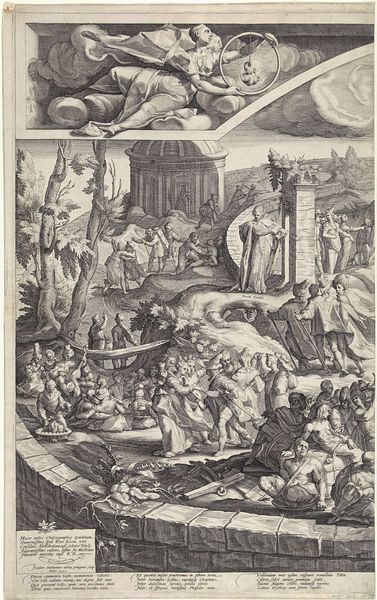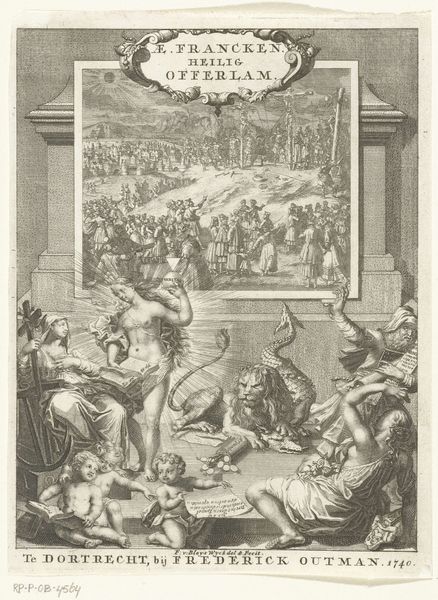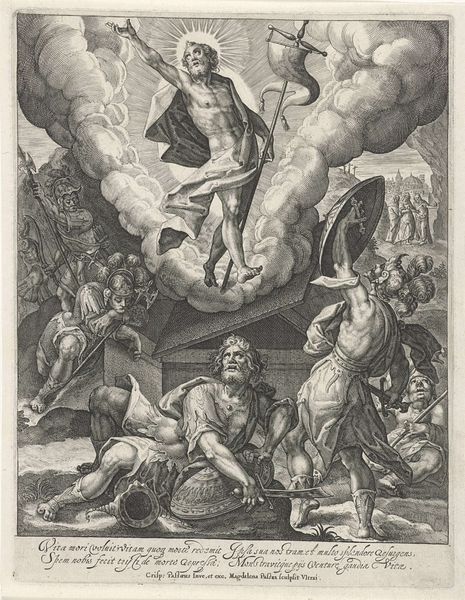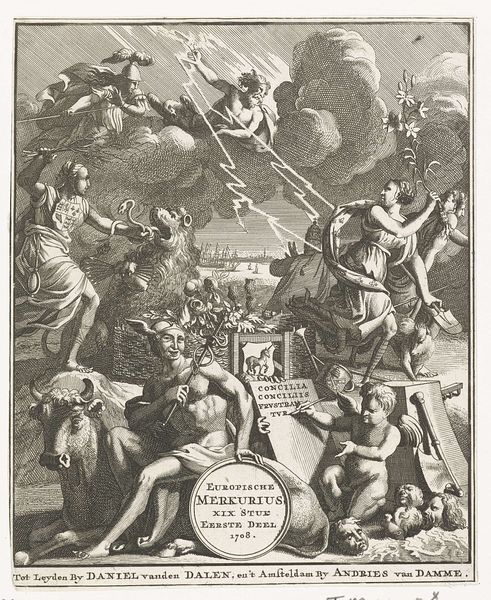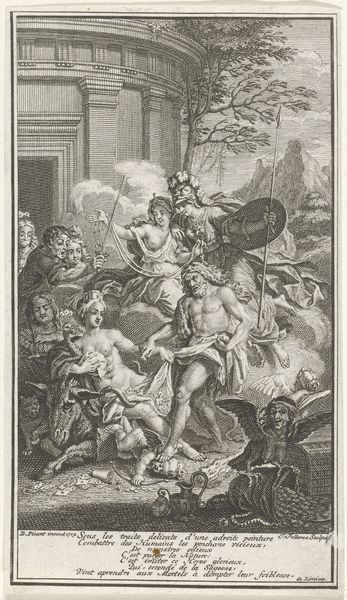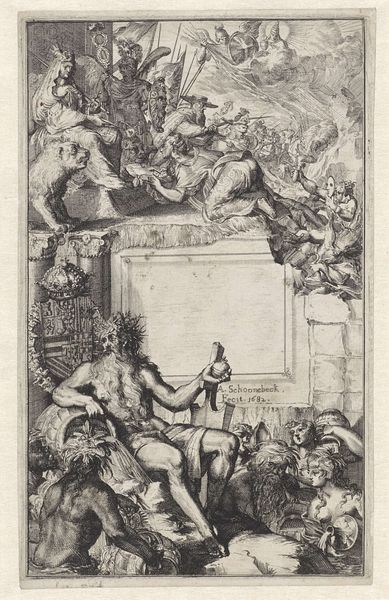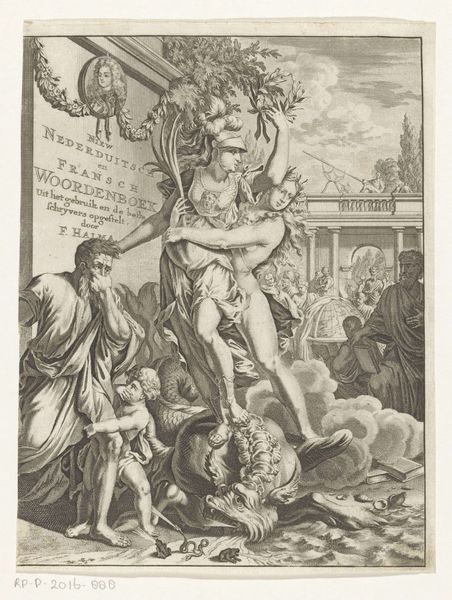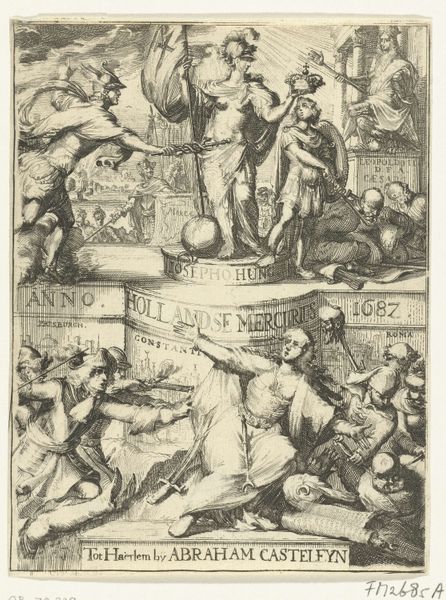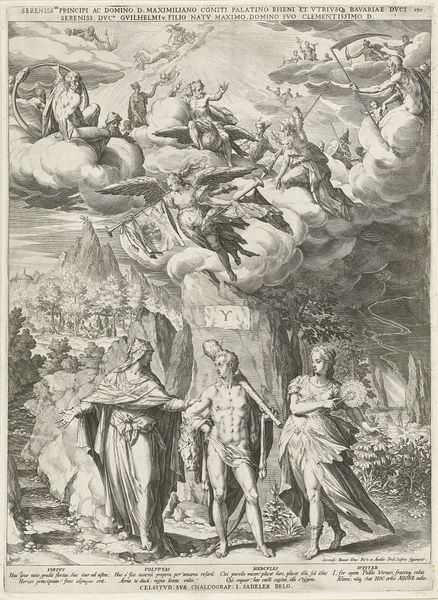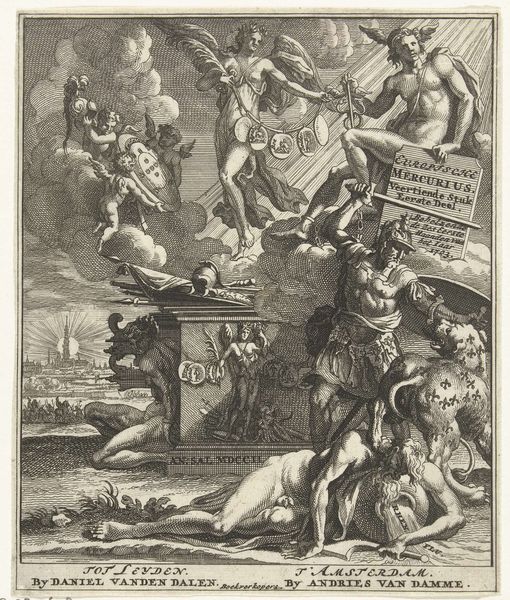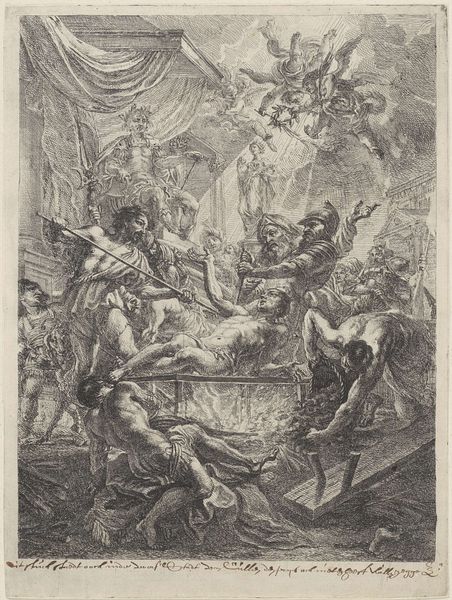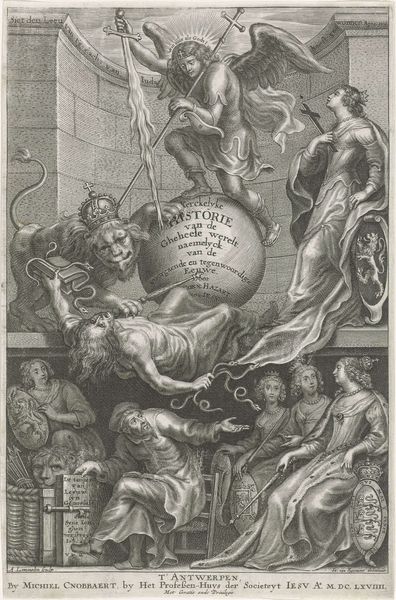
Allegorie op de troonopvolging van Leopold I door zijn zoon Jozef I, 1687 1687
0:00
0:00
romeyndehooghe
Rijksmuseum
print, engraving
#
portrait
#
allegory
#
baroque
#
pen drawing
# print
#
pen illustration
#
pen sketch
#
old engraving style
#
form
#
line
#
history-painting
#
engraving
Dimensions: height 680 mm, width 458 mm
Copyright: Rijks Museum: Open Domain
This print by Romeyn de Hooghe, made in 1687, allegorizes the succession of Joseph I to the throne of his father, Leopold I. The image connects dynastic succession to wider socio-political concerns. De Hooghe uses symbolic visual codes to create meaning. Figures from classical mythology and contemporary politics merge to create a sense of Leopold’s legitimacy. The Habsburg Empire was vast and diverse. The artist attempts to unify this diversity through shared iconography, though we might ask if this attempt can be seen as propaganda. The Holy Roman Empire, of which Austria was a key component, was in constant conflict with the Ottoman Empire. Here we see the Habsburg dynasty aligning itself with Christian Europe in opposition to this threatening “other.” De Hooghe worked for various political regimes and his art is closely tied to the power structures of his time. As historians, our task is to unpack the complex social and institutional forces that shape artistic production. By examining historical documents, political tracts, and cultural artifacts, we can gain a deeper understanding of art's role in society.
Comments
No comments
Be the first to comment and join the conversation on the ultimate creative platform.
